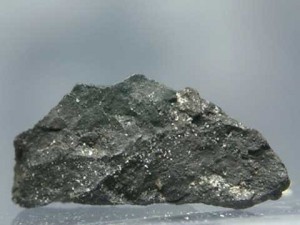The Natural History Museum (NHM) in London have acquired the largest specimen of the Ivuna meteorite from a private collector in the United States of America.
The 0.7 kg meteorite landed near Ivuna, Tanzania, on December 16, 1938, and was subsequently split into a number of samples. Most of the other specimens are held by private collectors or by the Tanzanian government.
Ivuna is one of only nine known meteorites that are classified as carbonaceous chondrites. These meteorites contain “heavy elements” (i.e. elements other than hydrogen and helium) in nearly the same abundances as in the sun, which means that they are essentially unaltered since they were formed at about the same time as the solar system itself, some 4.6 billion years ago. In 2001, investigation by a team from the Scripps Institution of Oceanography, the Leiden Observatory in the Netherlands, and the NASA Ames Research Center showed the presence in Ivuna of two simple amino acids, glycine and beta-alanine, and linked Ivuna with a likely origin in the nucleus of a comet.
‘Ivuna is a real-life time capsule that means we can look at the very first steps of how our solar system formed,’ said Dr Caroline Smith, meteorite curator at the Museum. ‘We hold one of the most comprehensive meteorite collections in the world, yet Ivuna has been a missing piece in the jigsaw.’
Ivuna will be a star specimen in a new meteorites gallery, which the NHM is planning for the near future. Before being put on display, the NHM’s Ivuna fragment will be taken to NASA’s Johnson Space Center, where a 20g piece will be removed and subdivided into two 10g pieces. One of these pieces will be set aside, while the other will be further divided into 200mg allocations for various teams of researchers to study.

